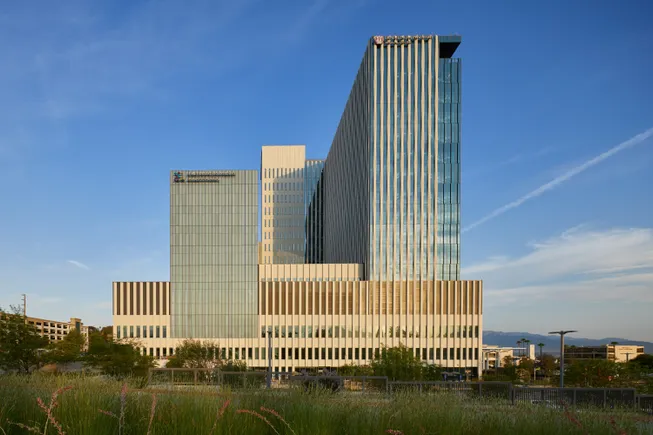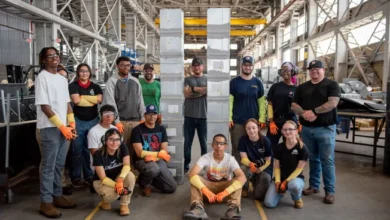Precast concrete enhances functionality, presenter says

WASHINGTON — Long regarded with skepticism due to its environmental impact, concrete is undergoing a revaluation in construction, according to a presenter at the National Institute of Building Sciences Building Innovation Conference in Washington, D.C., Thursday.
Concrete is one of the most common construction materials globally and is blamed for about 8% of global CO2 emissions, according to think tank Chatham House.
But Jim Schneider, executive director of the Mountain States chapter of the Precast/Prestressed Concrete Institute in Denver, said that when used innovatively, concrete can significantly contribute to more occupant-friendly buildings.
“Let’s put the occupants in front of some of the other issues because, look, we all know that there’s always different trends in construction and design,” said Schneider during the session. “We talked about carbon a lot and we talked about energy a lot, which are all very important, but let’s not lose sight of the fact that the design also really has to serve the people who are inside of it — their lives, lifestyles, life events.”
During the session, Schneider highlighted three use cases that convey how precast concrete can enhance the functionality of various building types.
Efficiency and aesthetic appeal
At Catholic University in Washington, D.C., construction teams used precast sandwich wall panels, which provide the appearance of masonry combined with the performance of an insulated precast wall. This single material allows for quick installation while maintaining thermal efficiency, said Schneider.
He also emphasized the value of composite design, which eliminates thermal bridging and prevents issues such as mold by avoiding cavities where moisture can accumulate. Interior walls of exposed concrete eliminate the need for additional materials, enhancing both thermal efficiency and aesthetic appeal.
Thermal imaging demonstrated the excellent thermal efficiency of these walls, showing minimal heat loss except through windows and doors, Schneider said.
Acoustic and thermal comfort
At the South Carolina Children’s Theatre in Greenville, Triangle Construction, the general contractor on the project, focused on acoustics and interior comfort.
The project needed to meet structural, fire and life safety codes while increasing cooling capacity for large crowds, especially in the hot South Carolina climate.
The nonprofit theater, operating on a limited budget, needed a material that was durable, versatile and capable of meeting stringent acoustic and insulative demands. Precast concrete proved to be the ideal solution, offering a large, column-free open space perfect for an auditorium, said Schneider.
The auditorium’s precast concrete walls isolate exterior noise from the performance space and support the rigging systems. The thermal mass of the concrete also significantly impacted energy use by keeping the building cool and comfortable, with the continuously insulated panels providing an R-value of 11, Schneider said.
Structural soundness
The Loma Linda University Medical Center project in Southern California required high seismic design standards to ensure life safety, said Schneider. Precast concrete met this need while delivering the desired aesthetics for both the adult and children’s waiting areas.
Schneider explained how the building’s 126 base isolators allow the building to move several feet in any horizontal direction during an earthquake without suffering major damage. This flexibility and strength are key components of the seismic design using precast concrete, he said.
Patient rooms along the perimeter featured floor-to-ceiling windows, bringing in ample natural light.
“Precast concrete has numerous attributes that can contribute to the design of healthy buildings,” said Schneider.



